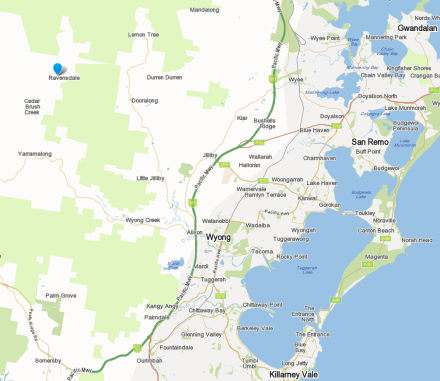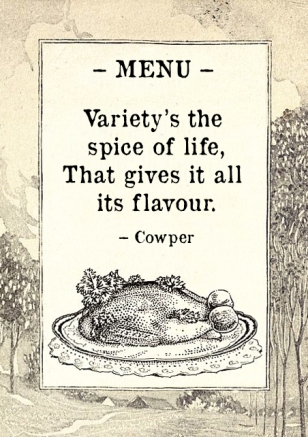These history notes are contributed to Valley Ventures by one of our members, Max Farley.
All local people know of Ravensdale as the upper part of the Valley north-west of the junction of Brush Creek and Ravensdale Roads. It seems, however, there is no consensus on why it has that name. An early mention of “Ravensdale” was on 27 August 1875 in the Australian Town and Country Journal. It recorded that “James Waters, Ravensdale, Brisbane Water,” was sending arrowroot to Melbourne for showing at the forthcoming Melbourne Exhibition. Any claim to the name being introduced after that date is clearly wrong.
Of relevance is John Woodbury who was born in the colony in 1822 and the son of Richard Woodbury. Richard was a convict who came from Bristol in England and lived with his family in the Hawkesbury area. Valerie Ross, a respected researcher, says in her 1981 book A Hawkesbury Story, that John Woodbury married Mary Wells in 1856 “and settled at Yarramalong, their property, Ravensdale, giving its name to the district”. However, reliable official records confirming that John and Mary did in fact actually settle permanently in Yarramalong and, if so where, have so far not emerged.
Of relevance too, is this comment by E H Stinson in the fifth volume of his Pictorial History of the Wyong Shire (1984) – “the district of Ravensdale took its name from Ravensdale Farm, the property of the pioneer James Waters… James was born in Ireland and named it after an ancestral property in his homeland.” James Waters (1834–1903) was born in Aughaloo (Augaloo), County Tyrone, Northern Ireland, as were his father Ezekiel and James’ brother Robert.
Of yet further relevance are the following extracts from the Home Page of the Ravensdale Historical Society in Ireland:
“Ravensdale is located in the Republic of Ireland just south of the Border with Northern Ireland… The name Ravensdale was introduced by the Fortesque family who were the landlords from the early 1770s. They resided at the Ravensdale Park House, a palatial house overlooking the valley… Today the name Ravensdale has been extended to include all of that picturesque valley… The Village of Ravensdale more or less in the centre of the Valley has many fine Victorian residences…”
It is noted that Castletown Old Cemetery between Ravensdale in County Louth and County Tyrone has several persons named Waters buried within it as do other cemeteries in the area.
On the face of it, the probability is that the name Ravensdale can be attributed to the Waters family although it cannot be inferred that the Waters’ ancestral property was Ravensdale Park House.
None of this, however, denies the Woodburys’ association with the district as property owners or occupiers or both. Resolving that question is beyond the scope of these comments but opens a challenging area for research by local historians or the Waters or Woodbury families. The closeness of the families is shown by the fact that, in 1881 after his wife died, James Waters married Priscilla Woodbury. She was the eldest daughter of John and Mary Woodbury.
. . . . . . . . . . . . . . . . . . . . . . . . . . . .
SOURCES: Max Farley; SOURCES: Trove Digital Newspaper Archive; NSW Registry of Births, Deaths & Marriages Historical Indexes; Ravensdale Historical Society; A Hawkesbury Story, Valerie Ross; A Pictorial History of the Wyong Shire, Volume 5, Edward Stinson; .





